The eXPose Approach to Crosslier Detection
Antonio Barata,
Frank Takes,
Hendrik Van Den Herik,
Cor Veenman

Auto-TLDR; EXPose: Crosslier Detection Based on Supervised Category Modeling
Similar papers
PIF: Anomaly detection via preference embedding
Filippo Leveni, Luca Magri, Giacomo Boracchi, Cesare Alippi

Auto-TLDR; PIF: Anomaly Detection with Preference Embedding for Structured Patterns
Abstract Slides Poster Similar
Categorizing the Feature Space for Two-Class Imbalance Learning
Rosa Sicilia, Ermanno Cordelli, Paolo Soda

Auto-TLDR; Efficient Ensemble of Classifiers for Minority Class Inference
Abstract Slides Poster Similar
Algorithm Recommendation for Data Streams
Jáder Martins Camboim De Sá, Andre Luis Debiaso Rossi, Gustavo Enrique De Almeida Prado Alves Batista, Luís Paulo Faina Garcia

Auto-TLDR; Meta-Learning for Algorithm Selection in Time-Changing Data Streams
Abstract Slides Poster Similar
Evaluation of Anomaly Detection Algorithms for the Real-World Applications
Marija Ivanovska, Domen Tabernik, Danijel Skocaj, Janez Pers

Auto-TLDR; Evaluating Anomaly Detection Algorithms for Practical Applications
Abstract Slides Poster Similar
Modeling the Distribution of Normal Data in Pre-Trained Deep Features for Anomaly Detection
Oliver Rippel, Patrick Mertens, Dorit Merhof

Auto-TLDR; Deep Feature Representations for Anomaly Detection in Images
Abstract Slides Poster Similar
Explainable Online Validation of Machine Learning Models for Practical Applications
Wolfgang Fuhl, Yao Rong, Thomas Motz, Michael Scheidt, Andreas Markus Hartel, Andreas Koch, Enkelejda Kasneci

Auto-TLDR; A Reformulation of Regression and Classification for Machine Learning Algorithm Validation
Abstract Slides Poster Similar
A Novel Adaptive Minority Oversampling Technique for Improved Classification in Data Imbalanced Scenarios
Ayush Tripathi, Rupayan Chakraborty, Sunil Kumar Kopparapu

Auto-TLDR; Synthetic Minority OverSampling Technique for Imbalanced Data
Abstract Slides Poster Similar
Proximity Isolation Forests
Antonella Mensi, Manuele Bicego, David Tax

Auto-TLDR; Proximity Isolation Forests for Non-vectorial Data
Abstract Slides Poster Similar
Combining GANs and AutoEncoders for Efficient Anomaly Detection
Fabio Carrara, Giuseppe Amato, Luca Brombin, Fabrizio Falchi, Claudio Gennaro

Auto-TLDR; CBIGAN: Anomaly Detection in Images with Consistency Constrained BiGAN
Abstract Slides Poster Similar
Decision Snippet Features
Pascal Welke, Fouad Alkhoury, Christian Bauckhage, Stefan Wrobel

Auto-TLDR; Decision Snippet Features for Interpretability
Abstract Slides Poster Similar
Malware Detection by Exploiting Deep Learning over Binary Programs
Panpan Qi, Zhaoqi Zhang, Wei Wang, Chang Yao
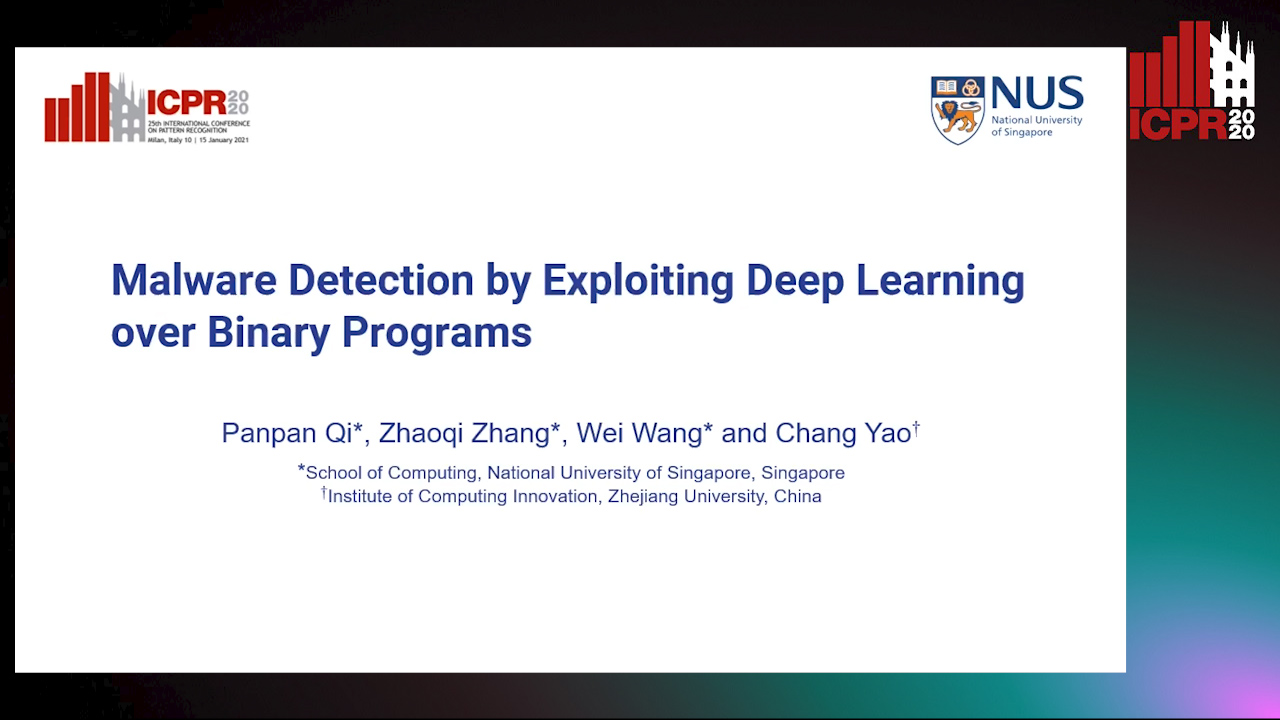
Auto-TLDR; End-to-End Malware Detection without Feature Engineering
Abstract Slides Poster Similar
Aggregating Dependent Gaussian Experts in Local Approximation

Auto-TLDR; A novel approach for aggregating the Gaussian experts by detecting strong violations of conditional independence
Abstract Slides Poster Similar
A Novel Random Forest Dissimilarity Measure for Multi-View Learning
Hongliu Cao, Simon Bernard, Robert Sabourin, Laurent Heutte

Auto-TLDR; Multi-view Learning with Random Forest Relation Measure and Instance Hardness
Abstract Slides Poster Similar
AdaFilter: Adaptive Filter Design with Local Image Basis Decomposition for Optimizing Image Recognition Preprocessing
Aiga Suzuki, Keiichi Ito, Takahide Ibe, Nobuyuki Otsu
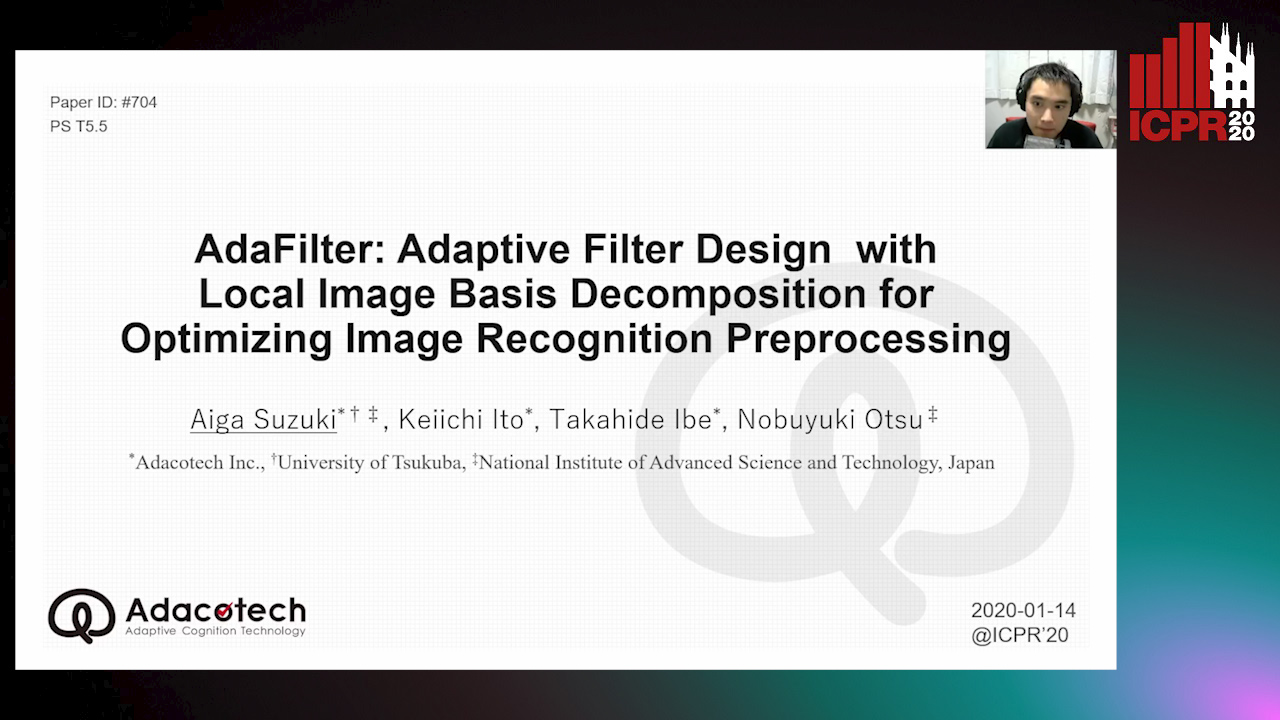
Auto-TLDR; Optimal Preprocessing Filtering for Pattern Recognition Using Higher-Order Local Auto-Correlation
Abstract Slides Poster Similar
Automatic Classification of Human Granulosa Cells in Assisted Reproductive Technology Using Vibrational Spectroscopy Imaging
Marina Paolanti, Emanuele Frontoni, Giorgia Gioacchini, Giorgini Elisabetta, Notarstefano Valentina, Zacà Carlotta, Carnevali Oliana, Andrea Borini, Marco Mameli

Auto-TLDR; Predicting Oocyte Quality in Assisted Reproductive Technology Using Machine Learning Techniques
Abstract Slides Poster Similar
Learning Parameter Distributions to Detect Concept Drift in Data Streams
Johannes Haug, Gjergji Kasneci
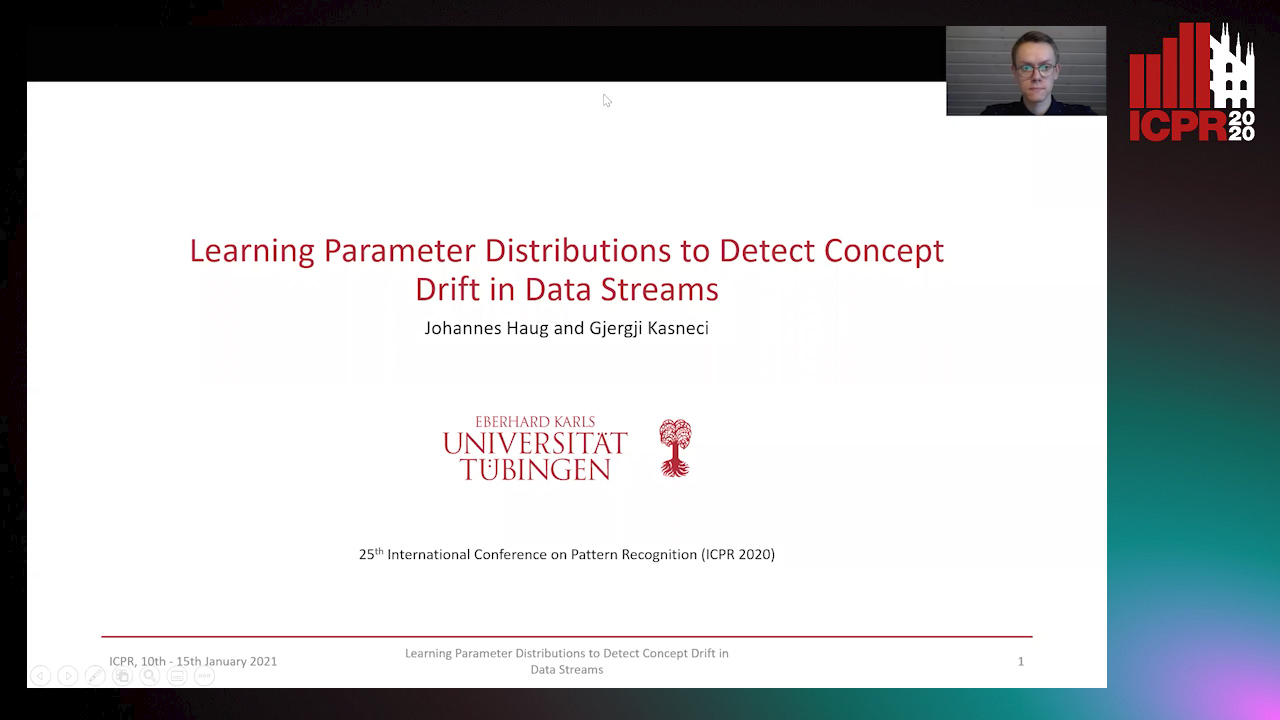
Auto-TLDR; A novel framework for the detection of concept drift in streaming environments
Abstract Slides Poster Similar
Memetic Evolution of Training Sets with Adaptive Radial Basis Kernels for Support Vector Machines
Jakub Nalepa, Wojciech Dudzik, Michal Kawulok

Auto-TLDR; Memetic Algorithm for Evolving Support Vector Machines with Adaptive Kernels
Abstract Slides Poster Similar
Confidence Calibration for Deep Renal Biopsy Immunofluorescence Image Classification
Federico Pollastri, Juan Maroñas, Federico Bolelli, Giulia Ligabue, Roberto Paredes, Riccardo Magistroni, Costantino Grana

Auto-TLDR; A Probabilistic Convolutional Neural Network for Immunofluorescence Classification in Renal Biopsy
Abstract Slides Poster Similar
Attack-Agnostic Adversarial Detection on Medical Data Using Explainable Machine Learning
Matthew Watson, Noura Al Moubayed

Auto-TLDR; Explainability-based Detection of Adversarial Samples on EHR and Chest X-Ray Data
Abstract Slides Poster Similar
Adversarial Encoder-Multi-Task-Decoder for Multi-Stage Processes
Andre Mendes, Julian Togelius, Leandro Dos Santos Coelho

Auto-TLDR; Multi-Task Learning and Semi-Supervised Learning for Multi-Stage Processes
Watermelon: A Novel Feature Selection Method Based on Bayes Error Rate Estimation and a New Interpretation of Feature Relevance and Redundancy

Auto-TLDR; Feature Selection Using Bayes Error Rate Estimation for Dynamic Feature Selection
Abstract Slides Poster Similar
Position-Aware Safe Boundary Interpolation Oversampling

Auto-TLDR; PABIO: Position-Aware Safe Boundary Interpolation-Based Oversampling for Imbalanced Data
Abstract Slides Poster Similar
Multi-annotator Probabilistic Active Learning
Marek Herde, Daniel Kottke, Denis Huseljic, Bernhard Sick

Auto-TLDR; MaPAL: Multi-annotator Probabilistic Active Learning
Abstract Slides Poster Similar
Improved anomaly detection by training an autoencoder with skip connections on images corrupted with Stain-shaped noise
Anne-Sophie Collin, Christophe De Vleeschouwer

Auto-TLDR; Autoencoder with Skip Connections for Anomaly Detection
Abstract Slides Poster Similar
On Learning Random Forests for Random Forest Clustering
Manuele Bicego, Francisco Escolano

Auto-TLDR; Learning Random Forests for Clustering
Abstract Slides Poster Similar
Seasonal Inhomogeneous Nonconsecutive Arrival Process Search and Evaluation
Kimberly Holmgren, Paul Gibby, Joseph Zipkin

Auto-TLDR; SINAPSE: Fitting a Sparse Time Series Model to Seasonal Data
Abstract Slides Poster Similar
3CS Algorithm for Efficient Gaussian Process Model Retrieval
Fabian Berns, Kjeld Schmidt, Ingolf Bracht, Christian Beecks

Auto-TLDR; Efficient retrieval of Gaussian Process Models for large-scale data using divide-&-conquer-based approach
Abstract Slides Poster Similar
An Invariance-Guided Stability Criterion for Time Series Clustering Validation
Florent Forest, Alex Mourer, Mustapha Lebbah, Hanane Azzag, Jérôme Lacaille

Auto-TLDR; An invariance-guided method for clustering model selection in time series data
Abstract Slides Poster Similar
On-Manifold Adversarial Data Augmentation Improves Uncertainty Calibration
Kanil Patel, William Beluch, Dan Zhang, Michael Pfeiffer, Bin Yang

Auto-TLDR; On-Manifold Adversarial Data Augmentation for Uncertainty Estimation
Bayesian Active Learning for Maximal Information Gain on Model Parameters
Kasra Arnavaz, Aasa Feragen, Oswin Krause, Marco Loog

Auto-TLDR; Bayesian assumptions for Bayesian classification
Abstract Slides Poster Similar
A Joint Representation Learning and Feature Modeling Approach for One-Class Recognition
Pramuditha Perera, Vishal Patel

Auto-TLDR; Combining Generative Features and One-Class Classification for Effective One-class Recognition
Abstract Slides Poster Similar
Multi-Attribute Learning with Highly Imbalanced Data
Lady Viviana Beltran Beltran, Mickaël Coustaty, Nicholas Journet, Juan C. Caicedo, Antoine Doucet

Auto-TLDR; Data Imbalance in Multi-Attribute Deep Learning Models: Adaptation to face each one of the problems derived from imbalance
Abstract Slides Poster Similar
Hierarchical Routing Mixture of Experts
Wenbo Zhao, Yang Gao, Shahan Ali Memon, Bhiksha Raj, Rita Singh

Auto-TLDR; A Binary Tree-structured Hierarchical Routing Mixture of Experts for Regression
Abstract Slides Poster Similar
On Identification and Retrieval of Near-Duplicate Biological Images: A New Dataset and Protocol
Thomas E. Koker, Sai Spandana Chintapalli, San Wang, Blake A. Talbot, Daniel Wainstock, Marcelo Cicconet, Mary C. Walsh

Auto-TLDR; BINDER: Bio-Image Near-Duplicate Examples Repository for Image Identification and Retrieval
Video Anomaly Detection by Estimating Likelihood of Representations

Auto-TLDR; Video Anomaly Detection in the latent feature space using a deep probabilistic model
Abstract Slides Poster Similar
Learning Natural Thresholds for Image Ranking
Somayeh Keshavarz, Quang Nhat Tran, Richard Souvenir

Auto-TLDR; Image Representation Learning and Label Discretization for Natural Image Ranking
Abstract Slides Poster Similar
Discriminative Multi-Level Reconstruction under Compact Latent Space for One-Class Novelty Detection
Jaewoo Park, Yoon Gyo Jung, Andrew Teoh

Auto-TLDR; Discriminative Compact AE for One-Class novelty detection and Adversarial Example Detection
Active Sampling for Pairwise Comparisons via Approximate Message Passing and Information Gain Maximization
Aliaksei Mikhailiuk, Clifford Wilmot, Maria Perez-Ortiz, Dingcheng Yue, Rafal Mantiuk

Auto-TLDR; ASAP: An Active Sampling Algorithm for Pairwise Comparison Data
Budgeted Batch Mode Active Learning with Generalized Cost and Utility Functions
Arvind Agarwal, Shashank Mujumdar, Nitin Gupta, Sameep Mehta

Auto-TLDR; Active Learning Based on Utility and Cost Functions
Abstract Slides Poster Similar
Separation of Aleatoric and Epistemic Uncertainty in Deterministic Deep Neural Networks
Denis Huseljic, Bernhard Sick, Marek Herde, Daniel Kottke

Auto-TLDR; AE-DNN: Modeling Uncertainty in Deep Neural Networks
Abstract Slides Poster Similar
Boundary Bagging to Address Training Data Issues in Ensemble Classification

Auto-TLDR; Bagging Ensemble Learning for Multi-Class Imbalanced Classification
Dealing with Scarce Labelled Data: Semi-Supervised Deep Learning with Mix Match for Covid-19 Detection Using Chest X-Ray Images
Saúl Calderón Ramirez, Raghvendra Giri, Shengxiang Yang, Armaghan Moemeni, Mario Umaña, David Elizondo, Jordina Torrents-Barrena, Miguel A. Molina-Cabello

Auto-TLDR; Semi-supervised Deep Learning for Covid-19 Detection using Chest X-rays
Abstract Slides Poster Similar
How to Define a Rejection Class Based on Model Learning?
Sarah Laroui, Xavier Descombes, Aurelia Vernay, Florent Villiers, Francois Villalba, Eric Debreuve

Auto-TLDR; An innovative learning strategy for supervised classification that is able, by design, to reject a sample as not belonging to any of the known classes
Abstract Slides Poster Similar
MD-kNN: An Instance-Based Approach for Multi-Dimensional Classification
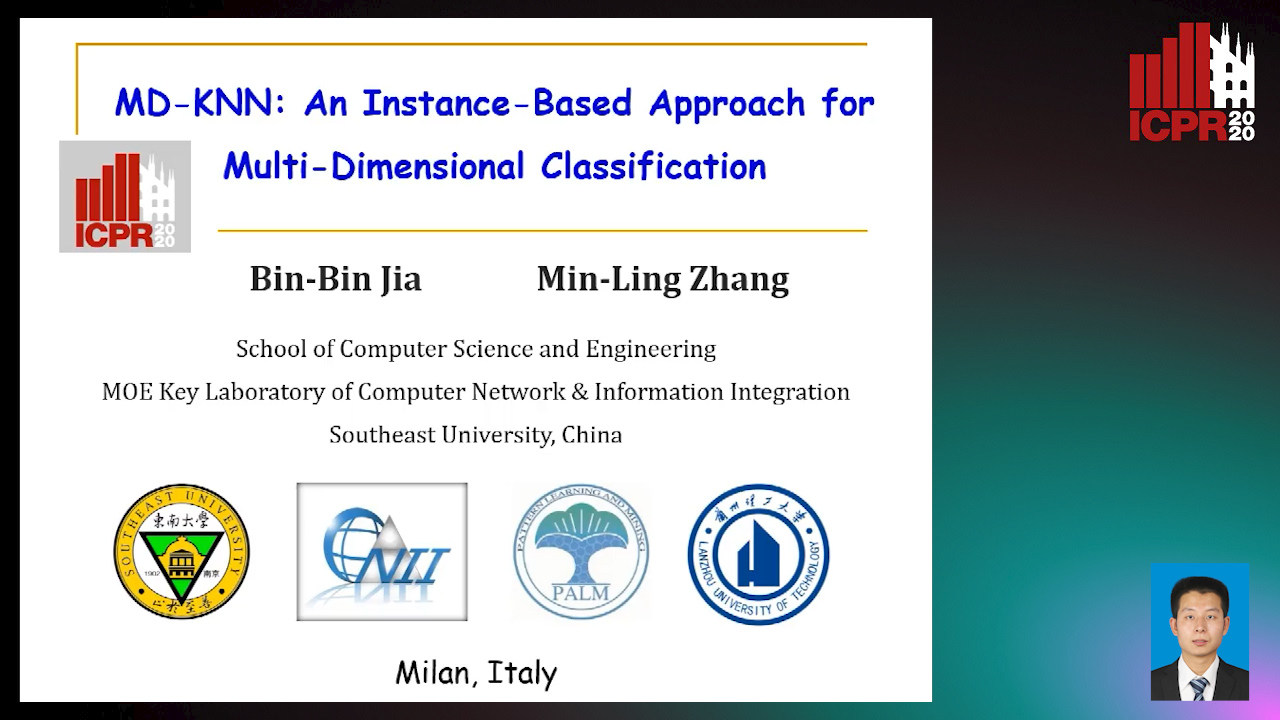
Auto-TLDR; MD-kNN: Adapting Instance-based Techniques for Multi-dimensional Classification
Abstract Slides Poster Similar
Mean Decision Rules Method with Smart Sampling for Fast Large-Scale Binary SVM Classification
Alexandra Makarova, Mikhail Kurbakov, Valentina Sulimova

Auto-TLDR; Improving Mean Decision Rule for Large-Scale Binary SVM Problems
Abstract Slides Poster Similar
One Step Clustering Based on A-Contrario Framework for Detection of Alterations in Historical Violins
Alireza Rezaei, Sylvie Le Hégarat-Mascle, Emanuel Aldea, Piercarlo Dondi, Marco Malagodi

Auto-TLDR; A-Contrario Clustering for the Detection of Altered Violins using UVIFL Images
Abstract Slides Poster Similar
Using Meta Labels for the Training of Weighting Models in a Sample-Specific Late Fusion Classification Architecture
Peter Bellmann, Patrick Thiam, Friedhelm Schwenker

Auto-TLDR; A Late Fusion Architecture for Multiple Classifier Systems
Abstract Slides Poster Similar
Detecting Rare Cell Populations in Flow Cytometry Data Using UMAP
Lisa Weijler, Markus Diem, Michael Reiter
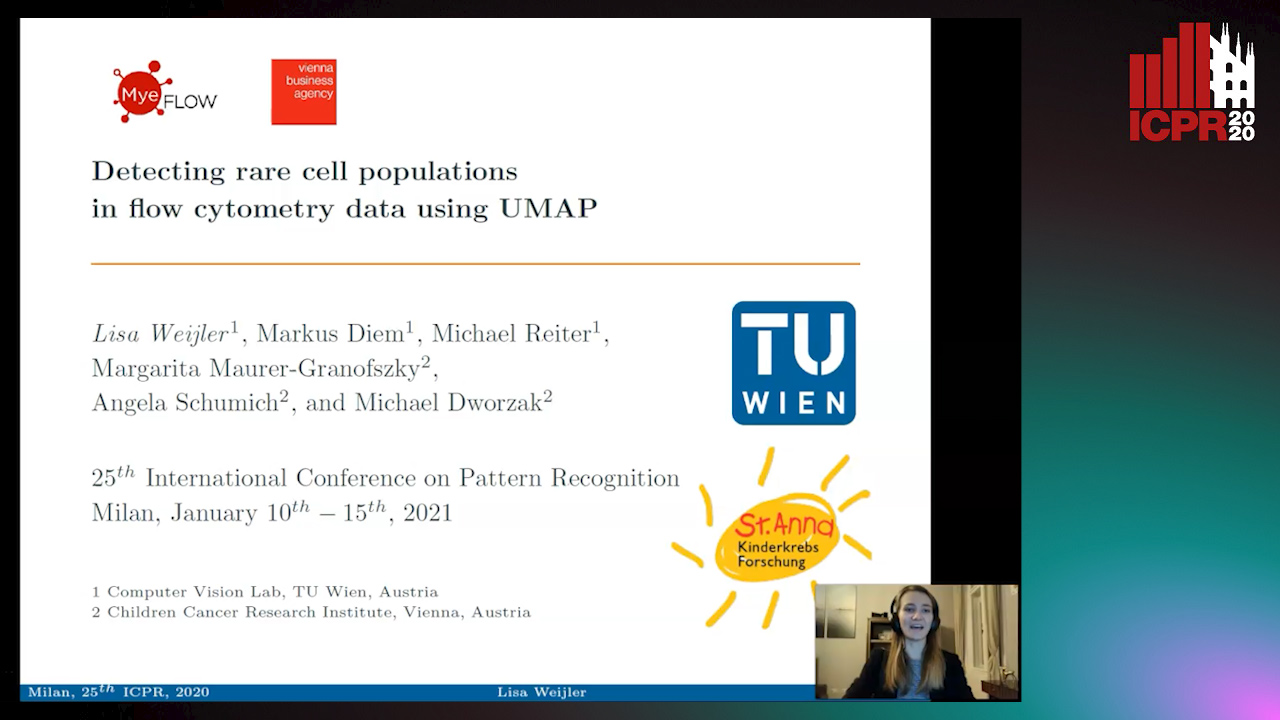
Auto-TLDR; Unsupervised Manifold Approximation and Projection for Small Cell Population Detection in Flow cytometry Data
Abstract Slides Poster Similar